Kicking Turds Across the Grand Wheel of Life and Death
Pasture walking, feedback, and cruelty
Before the eastern horizon burns open and the air fills with reek of warm, spring earth, the screech and song of cardinals carries through the fading cold and dark, almost rippling the dewy silk of spider webs that stretch over hoofprints and along the sharp arches of wet brambles. The orphaned baby cardinal that my son has been caring for– tucked into a box with a warm jar of water and hand-fed worms throughout the day– is stiff, cold, and silent. For all the birdsong and resurrection and ecstatic dirt teeming with life, springtime is still often cruel. Last night a solitary fox stood perched on our pond dam, shaking a squealing cottontail. Our dogs ran her off, and stole her meal. The dappled shade of elms in full leaf is speckled with the cracked, half-formed eggs of birds, wind-torn or otherwise pushed out, pulsing with hungry ants. Rat snakes choke down voles in the prairie thatch, and robins clash over territory in the waking light, their dewy shoulders slapping aggressively against bloody breasts.
In the poultry yard, ducklings, wet from hatching, peep and tumble in the dusty straw beneath protective hens. In spite of my best efforts, the world they are entering will be strange, challenging, and sometimes cruel. Foxes lurk just over the hill. Sharp-shinned hawks careen in for soft flesh on silent wings, and some of our tough old laying hens can even gang up on week-old ducklings when they are feeling particularly defensive of their feed. The cattle, goats, and swine are all on pasture, but we still have a few days before I can properly get lined up to move our chickens out on fresh grass for the season– away from the hatchlings. The duck hens walk quickly with their broods of waddling ducklings, and the slower, weaker ones will get lost from time to time. In addition to my other responsibilities, I now must check on the baby ducks now and again, sometimes wrangling lost little ones back to their mothers, who, understandably, want to attack me. Even a small hen, under the influence of maternal instinct, can be a formidable warrior, and it is the ducklings with the meanest mothers that stand the best chance of survival into adulthood.
The world of spring may be cruel at times, but it is an ordered cruelty, held in balance by very clear resource concerns and affected largely by the weather. From oak seedlings to baby birds, years where the proper alignment in conditions bring about an abundance in population, the fortunes of predators– be they caterpillars, minks, or hawks reciprocally increase as well. Agriculture, and by extension, human culture, attempts to buffer against these trends, for better or worse. We plant crops with the expectation of some fixed yield, in spite of flood or drought, in concert with economic demand. In fact, with or without feedback from the land on which we raise our food, the drive to produce crops in abundance leads us to very unnatural manipulations of our soil, if not their downright exhaustion and destruction. This is a different cruelty altogether from the inevitable natural cycle of birth and decomposition. It is the wholesale slaughter of living systems for short-term profits. To farm is to exhibit some sort of control over living things–plant and animals and soils, and it cannot be practiced sustainably without receiving some feedback. And this is why I take walks on pastures.
From a distance, as the deepening spring grass creeps taller by the hour, I can only make vague distinctions in my observations from paddock to paddock. It can be fairly clear what has been recently grazed– some of the paddocks appear dull and thatchy from far enough to tell. The stripped bark of mulberry and ash still shines where the goats have browsed, and looking down-dale, dark drops of cow manure speckle the stemmy pasture residue. But stepping in closer tells a richer story. The angle and aspect of certain stands of grass relates to their maturity, and our cows, spoiled beasts that they are, do not favor this more mature grass. I can learn which aspects of our dynamic pasture-scape must be grazed sooner, but this shifts depending on whether or not it is a wet or dry year. Feedback is not always instantaneous, but enough feedback over time becomes something more like intuition– the accumulation of observation across variating conditions.
Far more spoiled than the cows are the pigs, and they will eat clover down to the nubs and only touch the most tender grasses, at least early in the season when they can afford to be picky. As spring melts into summer, their tastes seem to change. Feedback informs strategy– whereas the cows will graze most of our paddocks fairly evenly, the pigs leave much to go over-mature, so it follows that the cows should graze prior to the pigs in order to ensure a more complete graze and utilization of photosynthetic resources. Even more spoiled than the pigs are the chickens, who are really only in it for the bugs, and later on, the seeds.
Watching the interaction between these species, and daily walking in their world, has informed some order in our systems– the cows go first, except when goat browsing is needed to reduce woody growth and open up the grass. We then allow the grazed cattle paddocks to rest at least three days so that helpful coprophagous insects like dung beetles can do their thing and directly sequester some of the organic matter of the cattle manure in our soils, followed up by poultry in most cases, who can mop up the maggot and fly population a bit, and then the pigs who can reset the vegetative growth, which the poultry is generally unlikely to do, at least on the more succulent plants. An exception to this is when the grass is liable to go to seed, in which case the pigs are more immediately useful for the sake of keeping as much grass in a vegetative state as possible. I liken it to something of a chess game, the pace of which is determined by photosynthesis, temperature and rainfall. None of this necessary feedback appears on a satellite map, or even from the seat of an ATV. A herdsperson must do what we’ve always done– walk among our stock and crouch in the grass. If you’re not picking ticks off yourself, you aren’t receiving feedback.
Forage and plant diversity, or a lack thereof, provides key information. While I rely mostly on memory, it may help to keep a pasture journal, listing plant species throughout the seasons and over the years. I try to note what populations shift, and always in the context of meteorology. It took me a decade, but I now reliably understand that a wet spring seems to spur on more sawtooth sunflower, whereas a dry year thickens the bergamot, at least here. I note the individual species, as well as their conditions. Certain forbs make heat or water stress obvious by their physical condition. The inventory of plants, and their relative health, can be extremely dynamic. While I put a lot of focus on weather in the correlations I build, we cannot underestimate management. This past autumn, the earth was dry and hard, and I felt like it wouldn’t be too damaging to pasture my hogs in the draw for longer rotations than usual. The result seems to be that they disturbed a heavy seedbank of garlic mustard, that I am now blow-torching.
The grass I don’t see is also a pasture health indicator. Sparse areas may appear green, but upon closer examination, the verdant hue is the result of mosses growing in between clumps of grass– a sign that an area hasn’t sprouted in a long time. It could be the result of thatch, or shade, particularly poor soil, or long-term erosion. Moss grows slow, so when I see it, I understand that the area has been thin of grass for a long time. When we began grazing this slope years ago, it was nothing but thatch, poison ivy, and bergamot. As the goats moved across it, they gradually revealed carpets of mossy clay, stitched together with vole tunnels, and little else beneath the accumulated debris. These are now some of our lushest pastures, after years of careful grazing informed by feedback.
Manure is a wonderful indicator of both pasture composition and animal well-being, but I’ve always had a strong appreciation for the stuff. Color and consistency can reflect the composition of forage– and like all poop, what we’re looking for is normal. For cattle, a normal cow pie is a slightly dome shaped pile with a porridge-like consistency. The richer the forage, the greener it typically appears, but since the tops of the piles dry out first, you will have to kick a few turds to get the full story. Often, beneath the dried surface, you will discover a writhing world of life, of wriggling larvae stained green with digested chlorophyl and shiny black beetles working tirelessly to transport nutrients beneath the surface of the soil. As grasses lignify and transition from vegetative growth to reproductive growth, these piles will appear more “stacked” and less “plopped”, indicating a natural loss in digestible nutrition, not entirely unexpected at certain times of year. Long blades of grass or under digested bits may indicate an imbalance in the rumen or hind-gut fermentation.
The longevity of a cowpie also tells a story. In healthy, bioactive pasture soils, cow pies dissipate somewhat quickly, absorbed into the living skin of the earth by bugs and worms and fungi. Humidity also hastens this process, as does manure composition (again, nutrient rich turds are relished more than the heavily lignified “stacked” pies). If a cow pie is older and dried out, go ahead and kick it, and see what’s living in there now and then, just for feedback. You can actually kick a turd of any vintage that you choose, as there are multiples waves and stages of decomposer life that take advantage of manure, I just find it less pleasant earlier on. After a season of weathering, you might find sprouts growing in them.
Most often, I find clover sprouting in manure, but sometimes I find things that are more exciting, like honey locust seeds, the germination of which is aided by large animal digestion. Recently I’ve been finding Osage orange sprouts in the old cow pies, particularly higher up the ridge here where the soil is particularly thin and poor. There seems to be a principle of balance in this trend– namely that thinner, poorer pasture soils benefit from these deeper rooted trees, and trees are what’s coming up in the upland cow-pies. Problem is, I cannot positively identify the mechanism for this phenomenon. I haven’t seen our cows eat hedge apples in earnest, as their seeds are encased in a largely undesirable, acrid pith. It is possible that birds or rodents, which often pick through cow pies for grubs may have shit out hedge seed while perched on the poop. I’ll keep an eye on the situation and update y’all in a decade, when I figure out the answer.
I also get feedback from wildlife on our pastures. The consistent presence of fly-catching birds or dewy silk spider funnels indicates a heavy fly population, which while often relating to humidity, windblock and geography can also indicate that an area has a heavy manure load and may need rest. Deer-paths indicate a degree of safety among prey animals, and can suggest a key pasturing location for vulnerable stock like poultry. Rabbit fluff, old gnawed bones and eggshells indicate predator hunting grounds, and I avoid these areas.
Where the grass stands tall after a heavy rain indicates firm rooting, but where it lies flat may be more prone to channelization and erosion. Annual weeds are a sure sign of overgrazing the previous year, and heavy thatch is from ineffective grazing. Yarrow and pussytoes tend to grow in thin, eroded soils that are subject to harsh elements from exposure, and broad-leaved plantain (sometimes called “White Man’s Footprint”) are an indicator of soil compaction. The list goes on, and the list is very dependent on your location. I cannot make it for you– you must put your feet on the earth and get ticks and smell the musk of nearby vixens and exist in the same place as your animals. You’ve got to kick some turds. Soil tests, pasture health tests, and published research and expert advice can all offer a snapshot, but in an age of increasing “precision ag”, AI, and conglomeration that leads to fewer herds-persons tending larger herds and pastures, your data as a grazier is incomplete if you do not use the most important tool in your tool-kit: a decent pair of boots.
At mid-day, once the dew has burnt off in even the deepest shade and the reaching world of grass lies bathed in sunlight and the songs of cardinals have faded to the deeper woods, I take my growing pup out for a sniff-down– allowing here to follow unseen trails through the tall grass, where she re-emerges with fox-torn wing feathers from a wild turkey, most likely taken from her nest. The pup urges me along, bringing me to the site of the kill, rolling and snorting in the bloody thatch. With some anxiety, we walk out to our two nesting turkey hens, who while fenced in and protected by dogs still remain vulnerable to predation out on the undisturbed shoulders of the prairie. They are both fine for now, still upon their cache of speckledy eggs, alert and very quiet.
We return home, where my son has buried the dead cardinal chick somewhere among the sunflowers. There are many trees, shrubs, and flowers in our yard which mark the graves of tiny birds and sick chicks and old cats and dogs we’ve accumulated over the years– a forest of little funerals planted by the caring hands of my tender-hearted kids. Peach trees feed from the bones of tired old hens, and walnuts unfurl from the compost of lost piglets –an orchard rising up from a landscape nourished on the ordered cruelty of the natural world– in each case some unfortunate beast we’ve attempted, in the way that humans attempt, to care for in moments of likely peril.
Right now I have an older, retired sow named Peach who is doing poorly. I have been close to putting her down several times this past week, but always end up feeling surprised when she suddenly shows a burst of energy, an uptick in activity, or a return to appetite. As with the cardinal, I’m unable to give up on her at this point. Wishful thinking, perhaps. I provide her with what I can– comfortable bedding, clean water, fresh cut comfrey and willow and free-choice charcoal, plus attention, affection and observation. If her condition worsens, or I can detect extreme discomfort or pain, I will not hesitate to euthanize her. This may happen soon. I do not know if animals understand cruelty, as a concept. They certainly understand stress, fear and pain, and I do my best to reduce these universal conditions as they arise. I myself recognize the cruelty in prolonging a life of suffering, would not wish it for myself, and extend that concern for my livestock.
My pup trots back and forth, rolling and marking each little murder scene on the prairie– reeking of small dead animals, she dislodges a rabbit foot from a tussock of grass, flipping it in her mouth awhile before leaving it to decompose, running laps on an expanding spiral of thick grass, outward to the next deposit of remains. Together, we bound through a landscape of ordered cruelty, of consumption and predation, nurture and decay, each clump of prairie grass pulling sustenance from the ancient strata of eagle-broken snakes and hapless moles dug out by coyotes and the fossil husks of bison and mammoth and billions of insects accumulated over millennia. It may seem cruel to us– this deep turning of biological energy that manifests in screeches and blood and cracked bone, this grand wheel of life and death– but perhaps that’s only because our species views the larger world through the cruelty which we alone created, which we alone perpetrate. What is laid beneath this thin skin of dirt by death will spring up again, green and reaching in the great undulating cascade of carbon, air, water and sun. And this is why I take walks on pastures.



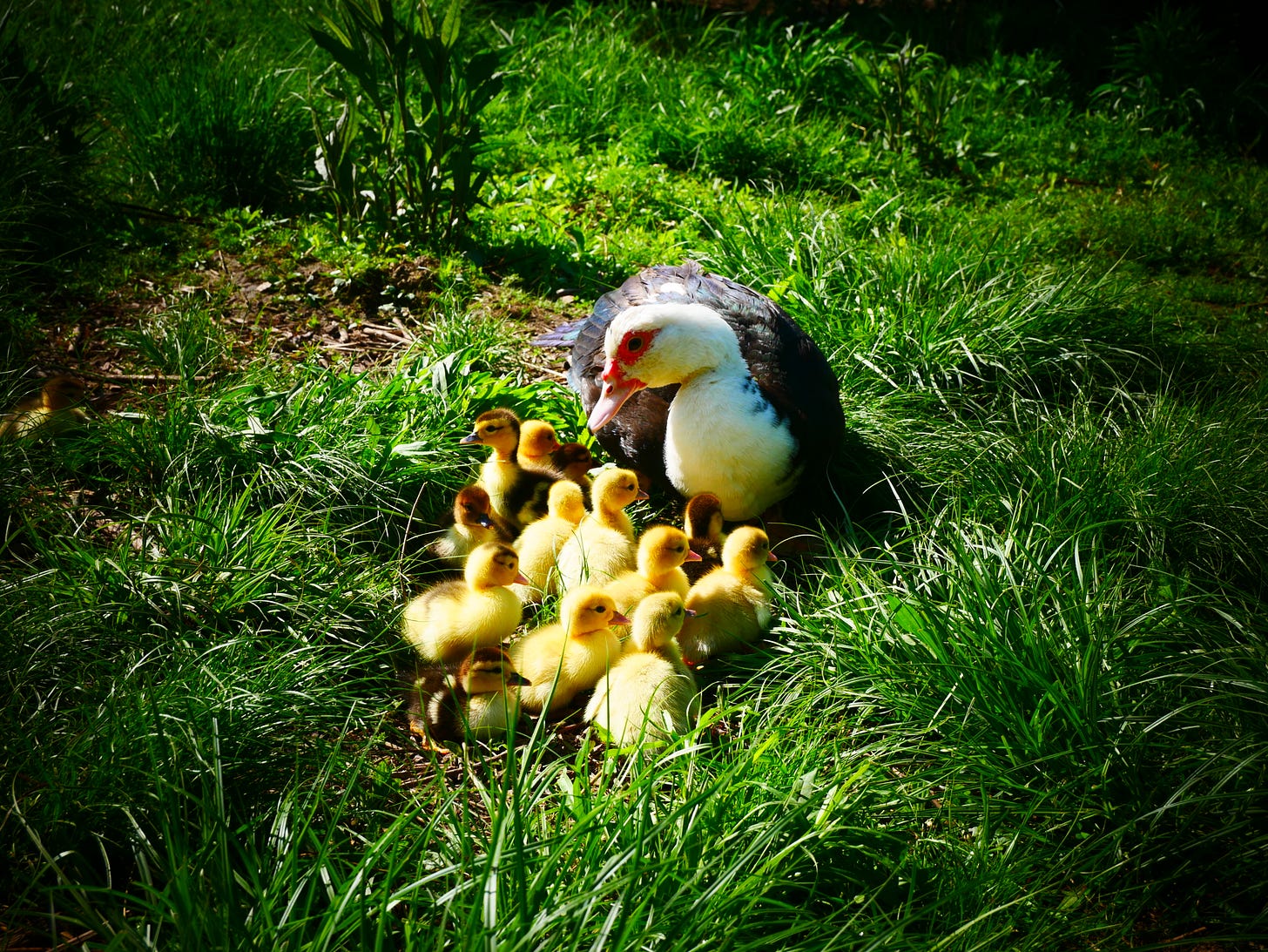

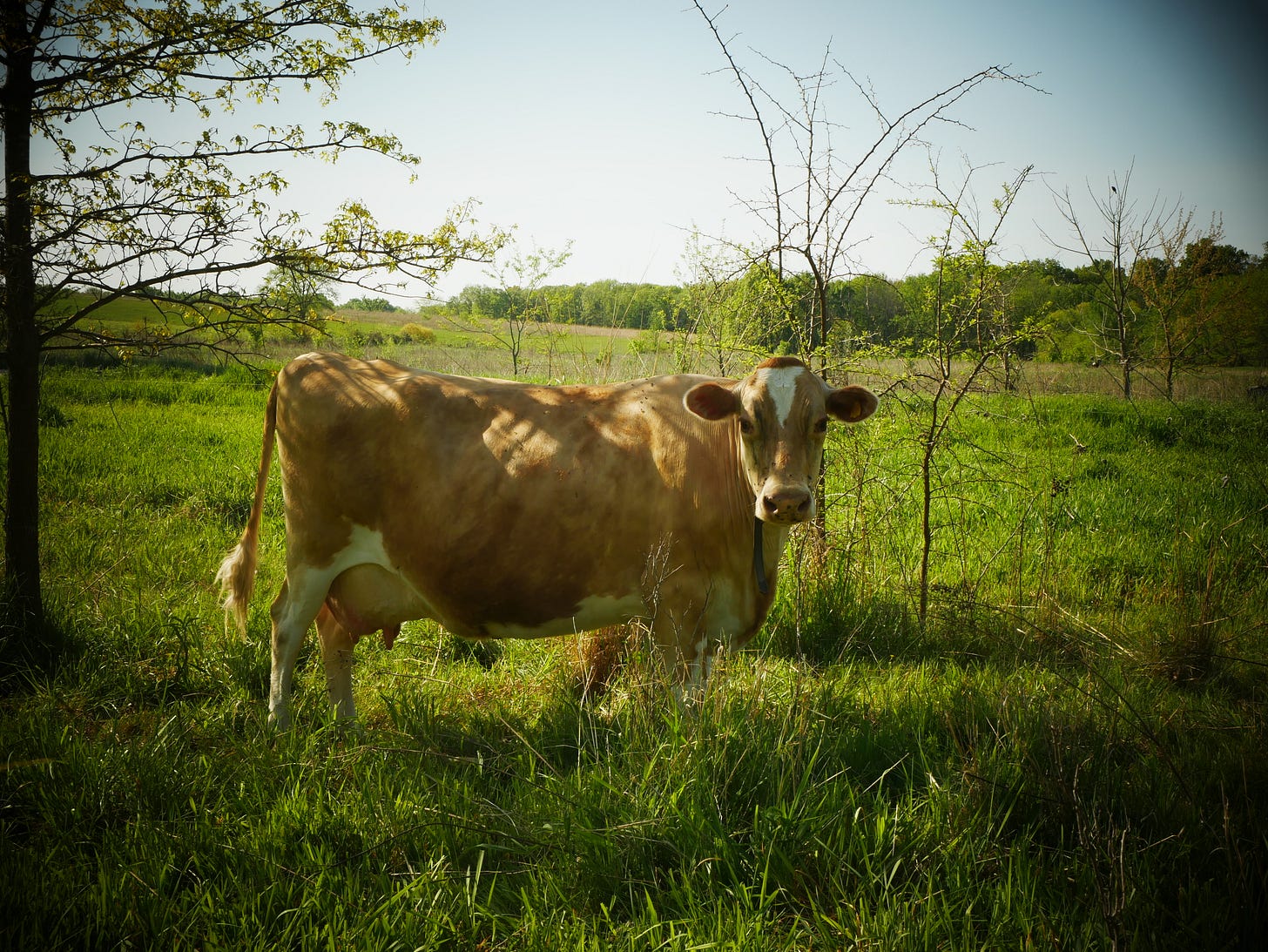
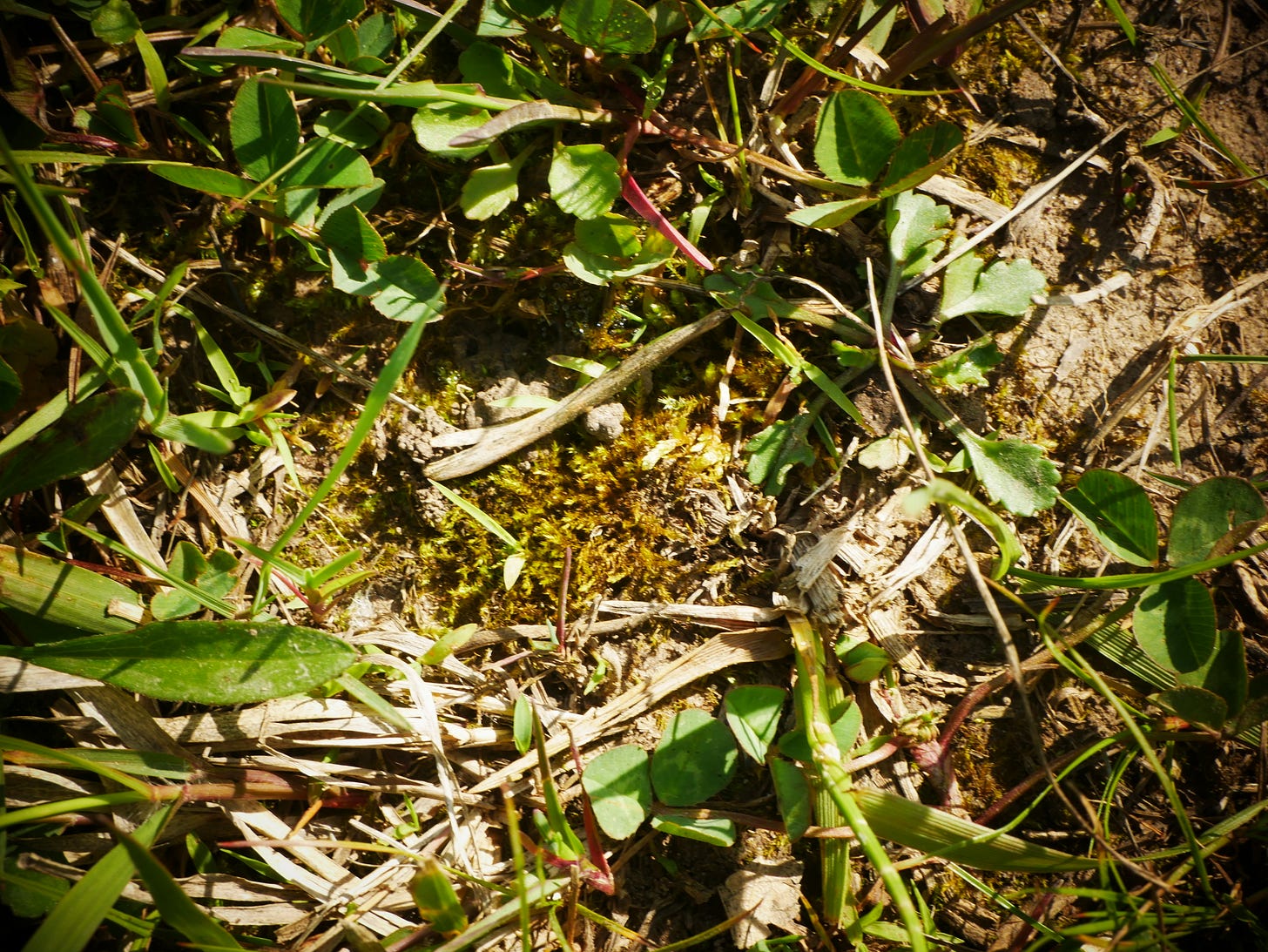
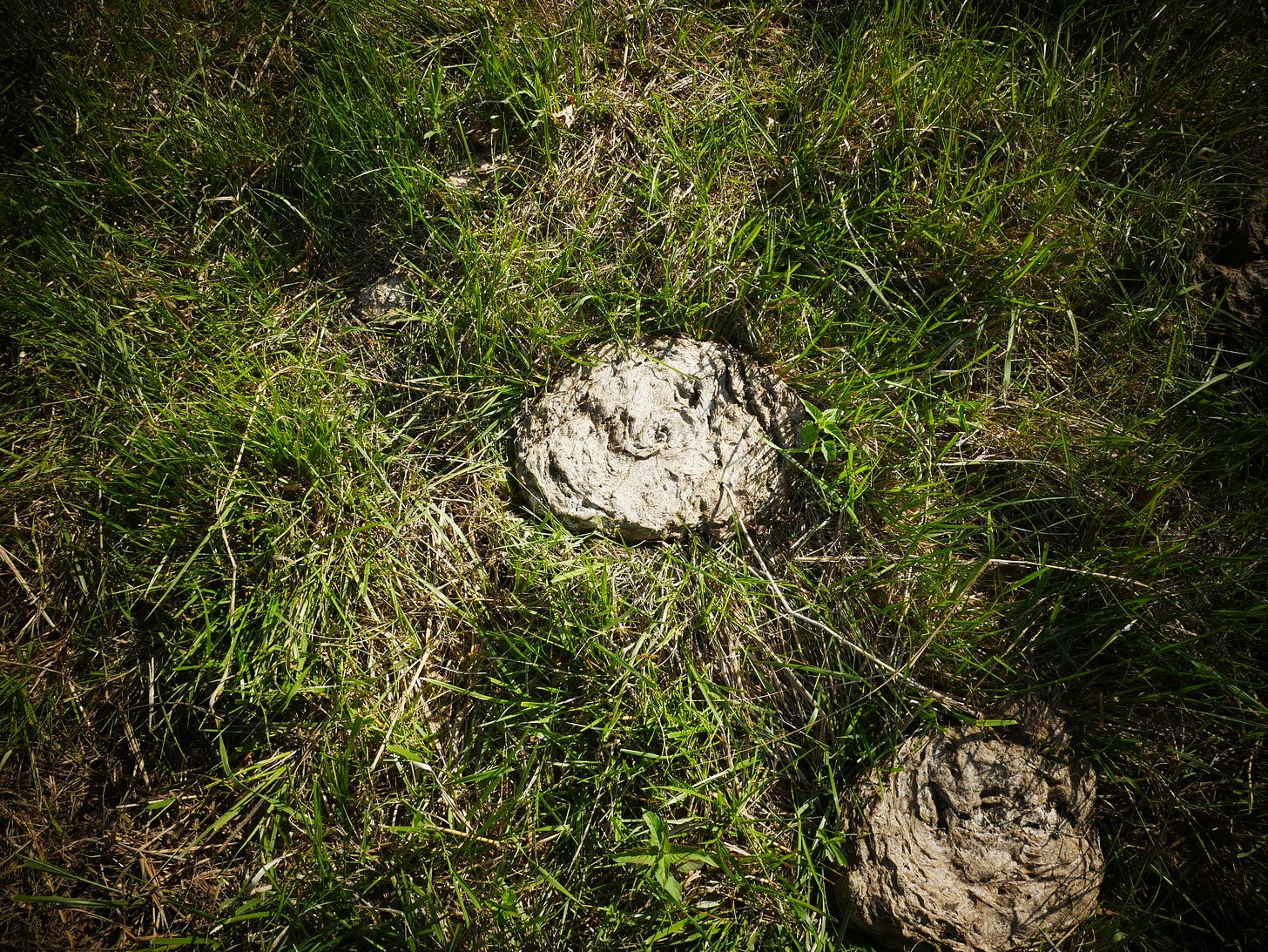
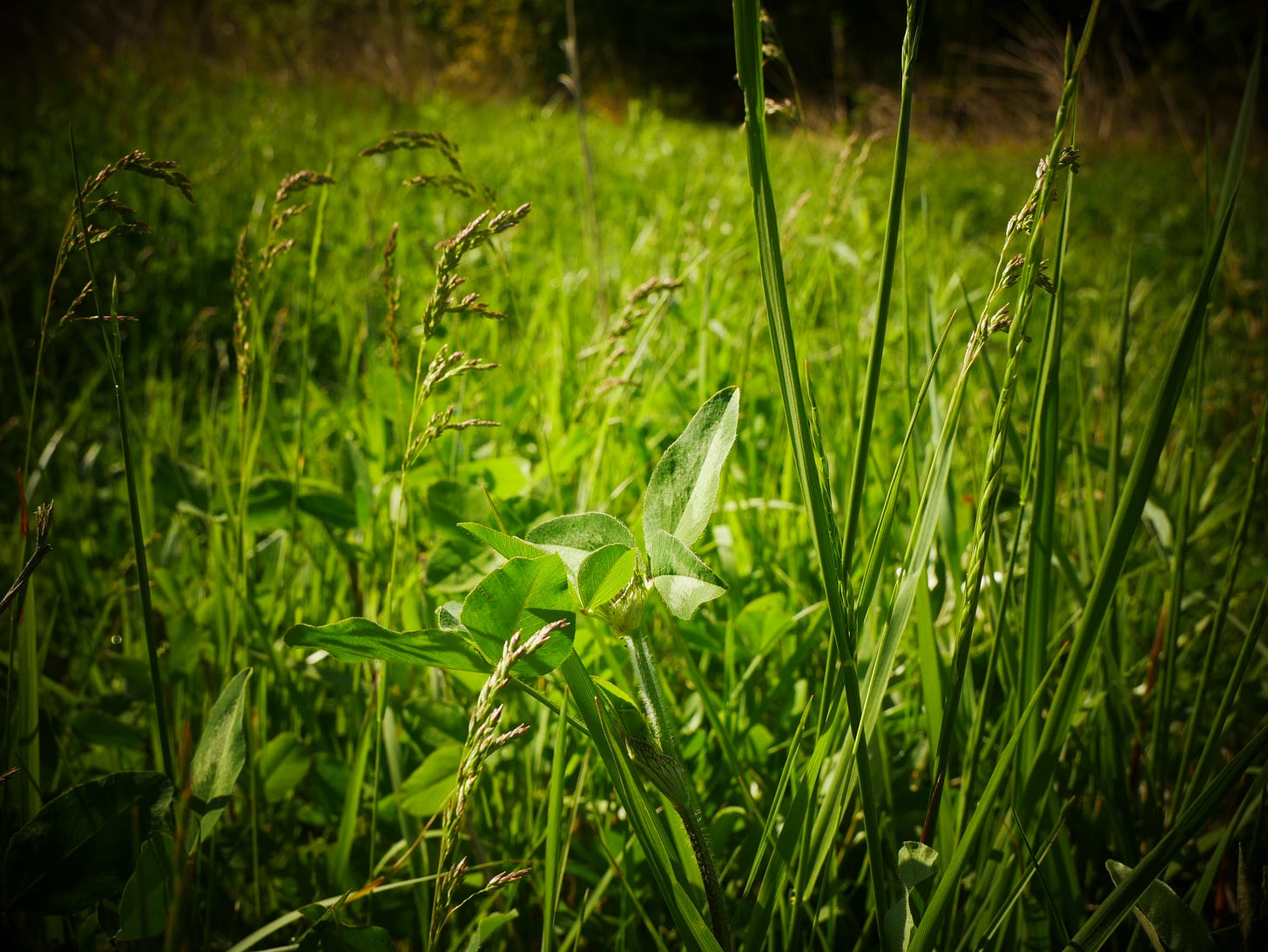
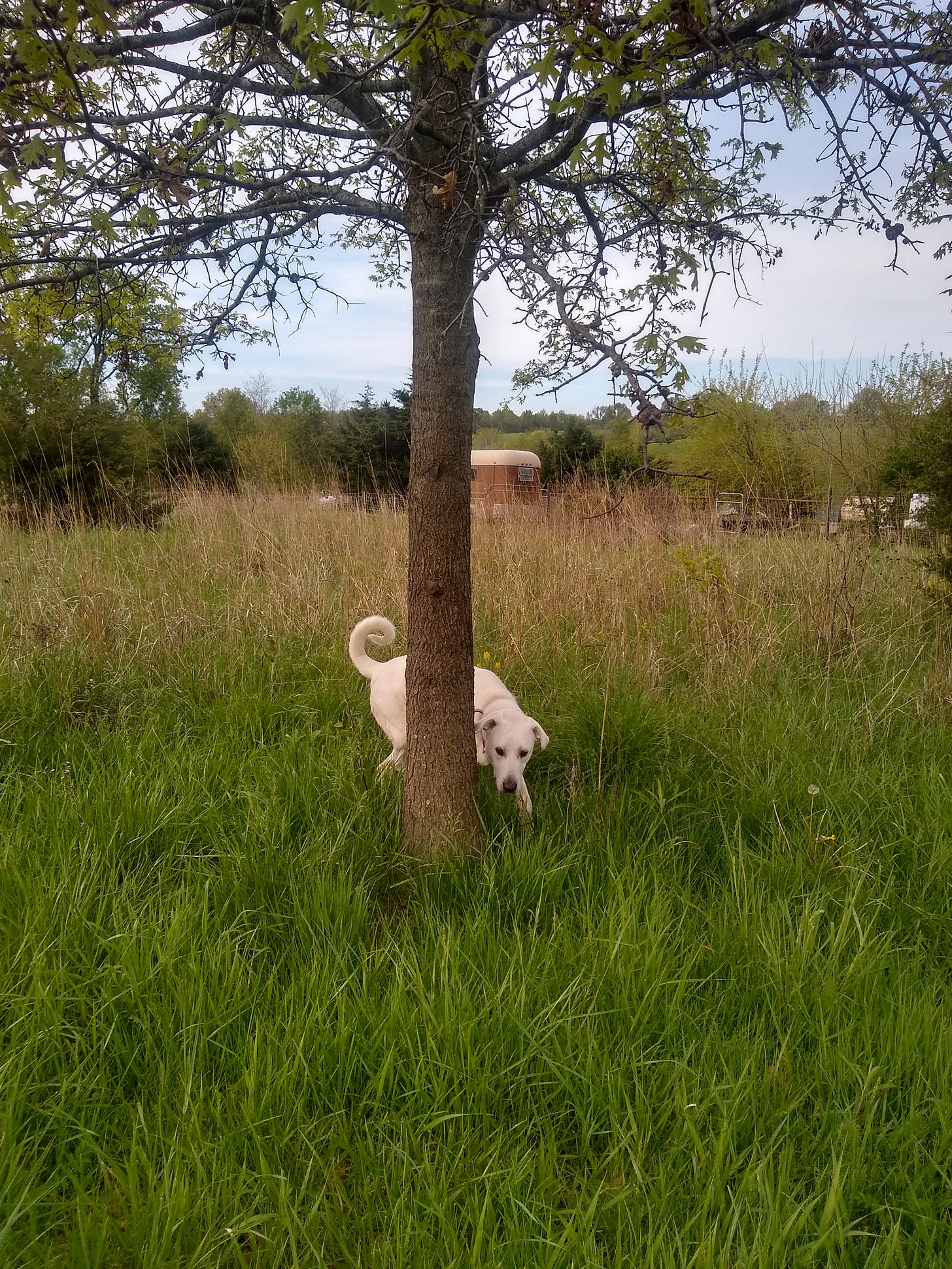
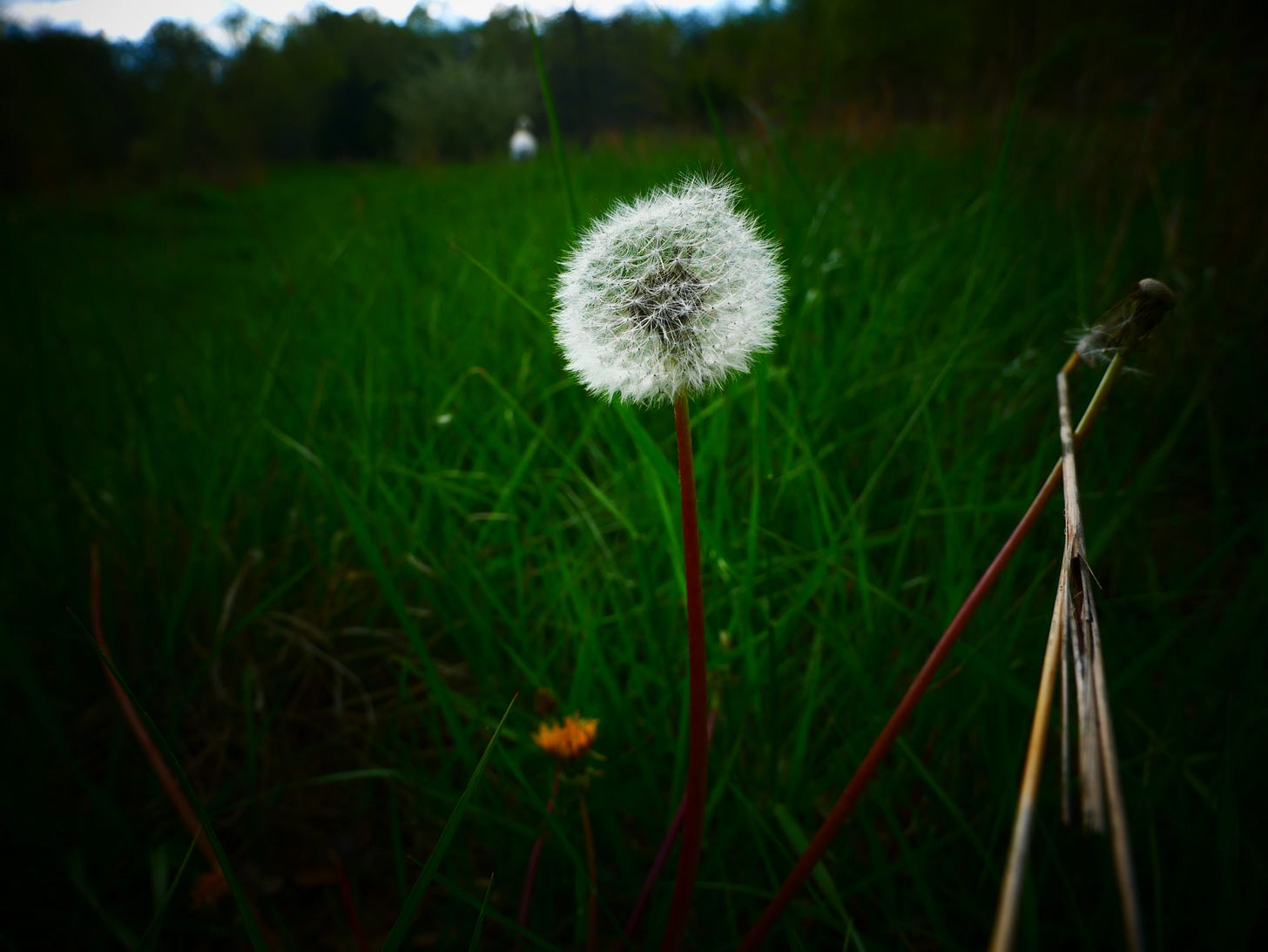
Thanks Ben. You manage to transport me (briefly) into such an interesting world. Thanks. With the world seemingly spinning out of control - your writing gives me some peace.
Beautiful! Those of us unfamiliar with farming have no clue as to what it takes. Thank you for sharing with and enlightening us.